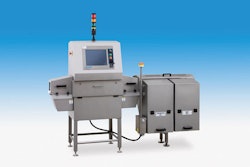Packaging World:
What does a modern-day package prototype entail?
Ken Wasserman:
Today we’re doing more packaging prototypes that emulate the actual production package, instead of just “making it pretty,” with a focus on printability. We are focusing more on color and getting involved earlier in the process, so that when an executive is handed his prototype, it will look exactly like the package when it’s on the shelf.
In the old days, we used to make it nice and pretty, and the executive would look at it and complain when they saw the product on the shelf that it didn’t look like the prototype that they were shown.
With so much emphasis on ever-shorter time to shelf, what are the arguments for package prototypes getting a share of a brand marketer’s budget?
It’s more important than ever that when the artwork is prepared, that we get involved earlier in the process. It used to be that we would receive a file and the customer would say ‘Give me three prints of this file,’ and we would print out the job, hand them the job, and that would be the end of it.
Today we get involved much earlier in the process. We’re actually even sitting in some of the preproduction meetings as our customers are going over their final designs. We make sure the actual package can be printed, that the colors will look good, that the line screens can print...that shortens their time to market by knowing these things in advance.
When you have this sit-down at the table, are there other vendors getting in earlier in the process too?
Yes. Sometimes the printers and separators are there. It becomes more of a collaborative effort, more than just sending them the job.
Given today’s technology advances, what should brand marketers know about prototypes that might be different from the last time they considered doing a prototype?
Several production methods have changed, and new packaging techniques involved give the designers more options. We need to make sure that the comp mimics the final production process as closely as possible. We understand the color, the inks, and the manufacturing process. We can mimic the production environment as closely as possible.
You mentioned color. What has changed in terms of considerations for color and color registration accuracy?
The knowledge of the final printing process and the production is the key to making a good package. We’re able to help brand owners early in the process, choose color, see if their colors match and work well together. If it’s too light or too dark, we can work with the finish and coat the substrate to retain the high-quality image the brand is looking for.
For package-creation teams that might be considering an investment in package prototyping, how do you see prototyping evolving in the near future?
We’ve set up several layers of quality in prototyping where we can do everything from digital comps all the way through sales samples, presentations, focus groups, all the way up to the high end. In the future, with the right prototype company, you can invest properly in the packaging process. I think you’ll see prototyping becoming more prevalent in packaging to save money down the road.



























